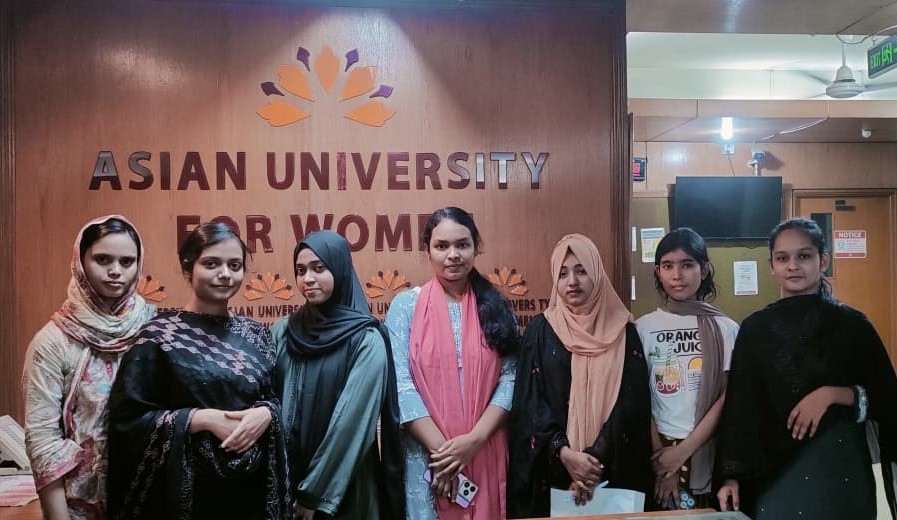‘If a client approaches an agency and tells that let’s win some awards. I don’t think there is a single agency in Bangladesh which won’t give everything behind it’
By Ahmed Sharif
Even without a formal industry structure to drive organised growth and without specialist institutions to train human resources, the advertising sector in the country has revealed itself as an emerging industry in recent years. It has not only facilitated employment of talented individuals, but also helped other sectors to grow. Bangladeshi creative works are now recognised internationally.
‘If we compare Bangladeshi ads with that of Thailand, we’re not that good. But compared to India, our ads are of higher standard,’ said Aditya Kabir, assistant vice president, strategic planning at Asiatic Marketing Communications Limited, about quality of Bangladeshi ads. He pointed out, whereas market of Thailand (and also Pakistan) is of moderate size that allows a lot of flexibility, the Indian market is too large, leaving marketers with too much to do. However, the Bangladeshi market, in view of size of the economy, is too small to try a lot of things.
Performance and Recognition
International recognition of Bangladeshi ad agencies has come in the form of various awards. Ad agencies such as Grey, Asiatic and Cookie Jar have won global awards. ‘Awards are also a measure of performance,’ said Aditya Kabir, who has been in the industry for 18 years.
It’s actually the clients who play the most vital role in the development of good advertisements. But good advertisements are often linked to good budgets. ‘There is a positive correlation between quality and cost,’ said Muhitur Rahman Chowdhury, a deputy manager at Banglalink Digital Communications Limited. ‘For a good quality advertisement, we may have to invest in a foreign choreographer, foreign models, or even post production in other countries. Not all the facilities are available in Bangladesh.’
Aditya Kabir added that the clients have to have a mind to appreciate creative works and to take risks. ‘If a client approaches an agency and tells that let’s win some awards. I don’t think there is a single agency in Bangladesh which won’t give everything behind it.’
The agencies are getting confidence and becoming more focussed on creative works, thanks to support from clients. ‘Some big local companies are realising the importance of brand positioning because of competition in the market,’ said Vashkar Abedin, who has been in ad industry for more than 15 years. However, Gousul Alam Shaon, Managing Director of Grey Bangladesh, complained about a lack of remuneration from the clients for providing quality services. ‘The kind of payment the clients pay for the kind of work we do for them is not fair.’
Another measure of performance is beyond the boundary acceptance that Asiatic, Grey, Adcom, Benchmark, Unitrend and others are exploring regionally. Ads made by Bangladeshi companies had helped businesses in Nepal, Sri Lanka and Afghanistan, where the companies had to compete with big players. Some Bangladeshi ads were also adapted for viewing in India.
Access to international television channels, and more recently, Indian Bangla TV channels have had a deep impact on Bangladeshi advertising industry. Local TV channels are now competing against Indian Bangla channels for viewership, and this also bears an impact on the audience of TV advertisements. ‘You may even find soon that Star Jalsha is opening an office in Bangladesh — They want our business, I’m sure.’
Milestones
Entry of multinational advertisement agencies into Bangladesh has revolutionised the industry during the last two decades or so. There was a time in the 1980s and 1990s when local companies used to strive to get foreign affiliations. Foreign affiliations gave local companies an edge in terms of providing better solutions to the clients. The market situation changed with the entry of Grey in 1996, followed by Ogilvy & Mather, Bates 141, Maxus, Mindshare, and others. More are coming as well. They all have seen the potential of this industry in Bangladesh. ‘Creative agencies are developing anew because of the multinationals and influx of new ideas that have market demand,’ said Muhitur Rahman of Banglalink.
The advent of a new generation of local advertising professionals also started changing the landscape of the industry since the mid-2000s. ‘Professionals who entered the market between middle and late 1990s, began to mature in the mid-2000s. These people were exposed to boom in global media,’ said Vashkar Abedin. ‘Until then the Indian professionals used to lead the strategy in this industry and the matured local professionals have replaced the Indians since then.’
Trends
Advertisement budgets are getting dispersed for competition among too many local TV channels and their fragmented viewership. And foreign TV channels have complicated the matter. Gousul Alam Shaon of Grey feels that the local media need to compete with the foreign media to attract attention of viewers. ‘The only way to find the influence that Zee Bangla and Star Jalsha have is to improve our content.’ However, the case is not the same for the local newspapers, as foreign newspapers do not have any market in Bangladesh. Only some world famous magazines and an Indian lifestyle magazine have some readers in Bangladesh.
In the ad industry, specialist companies are coming up with specialised services. Just one and a half decade back, there was no PR (Public Relations) agency as such. Now there are many — Masthead, Cogito, ForethoughtPR, Benchmark, Impact, Watermelon, Concito and so on.
The boom in the telecom, Internet connectivity and the social media has led to the boom in digital marketing. Companies such as GroupM, Asiatic Digital, Cookie Jar, Webpers, Analyzen, Magnito and Maverick are crowding this market. A globally reputed company, MediaVest has just entered the market.
Online ads and telemarketing companies are making their presence felt even though the budget in such areas is still trivial compared to TV ads. G&R, mADmart, SSL and some others are pushing growth. ‘The latest trend is Internet,’ said Muhitur Rahman of Banglalink. Importance is also given to event and activation. ‘Event, activation, sampling, door-to-door sales, one-on-one communication – these are always seen by clients as safer,’ said Gousul Alam Shaon of Grey and predicted more growth of online advertising, apps, games, online content and online-offline integration. He explained that the TV should be redesigned in the future for the sake of sustenance while the print media would have to come up with new ideas to survive in this era of digital media.
In Bangladesh, all industries – telecom, FMCG (Fast Moving Consumer Goods), banking and impulse products – have contributed to the development of ad sector. ‘The banking sector keeps the brain clear, FMCG keeps our enthusiasm going, impulse lets us do what our heart wants to, and telecom keeps our business running,’ observed Aditya Kabir. Grey’s Gousul Alam Shaon predicted that ‘we would probably see a rise in the retail sector. In different categories, we’re seeing how retail is mushrooming. It’s bound to happen.’
Pool of manpower
Industry people agree that there is a lot of talent in Bangladesh. Quite a few talented individuals have come back after getting educated in reputed foreign educational institutions including film and media institutions. Despite the demand for such talent in the market, it is only natural that not everyone has the opportunity to go abroad for studies. So, there is no alternative to local education. ‘We’re suffering in the area of human resources,’ said Gousul Alam Shaon of Grey. ‘There is no institute here to learn advertisement and brand management. People are learning after coming to the agencies.’
It’s still not a formal industry. Lack of unity among the players is evident in the absence of a formal association of them. Everyone feels the necessity of regulations, guidelines and supervision and policies are needed. Some of them say the government should allow businesses to spend some foreign currencies to promote and explore business. None of the ad agencies is listed with the stock exchange unlike the case in other countries.
The lack of a formal structure is not helping to create a good platform for nurturing new talents. It’s high time to set up an advertising school in the country. ‘After all, this is a Tk 2,500-3,000 crore market. Such a large industry should afford an institute,’ said Gousul Alam Shaon. ‘Now we have to develop a much better relationship with universities, so that we can start recruiting from there,’ said Aditya Kabir. Some of the universities are nowadays bringing in facilitators with experience in the ad industry but their number is inadequate, said Vashkar Abedin.
Drawing Talents
Top-ranking Ad agencies have a painstaking recruiting process. The agencies, too, always find it difficult to fetch the right people. ‘Graduates from madrashah to electrical engineering work here. This industry requires no definitive background,’ said Aditya Kabir. Mostly non-creative works are assigned to interns. ‘Most interns focus on their certificates – their period of stay and number should be determined by agreement with universities,’ said Vashkar Abedin.
There is a problem with study of brand as most institutes are focussed on marketing. ‘It becomes easier if you get a good writer or a good visual artist, who can be adapted to advertising works. But we’re not at all getting people for strategy,’ Gousul Alam Shaon regretted. Also the industry has to grow further to draw the talents although its growth is also linked to the economic growth. If businesses grow, advertisement industry will grow simultaneously. And a bigger industry can attract more talents from the market. On the bigger landscape, a pool of quality manpower suitable for creative works also depends on quality of secondary and tertiary education.
The industry people still see bright prospects of growth.















